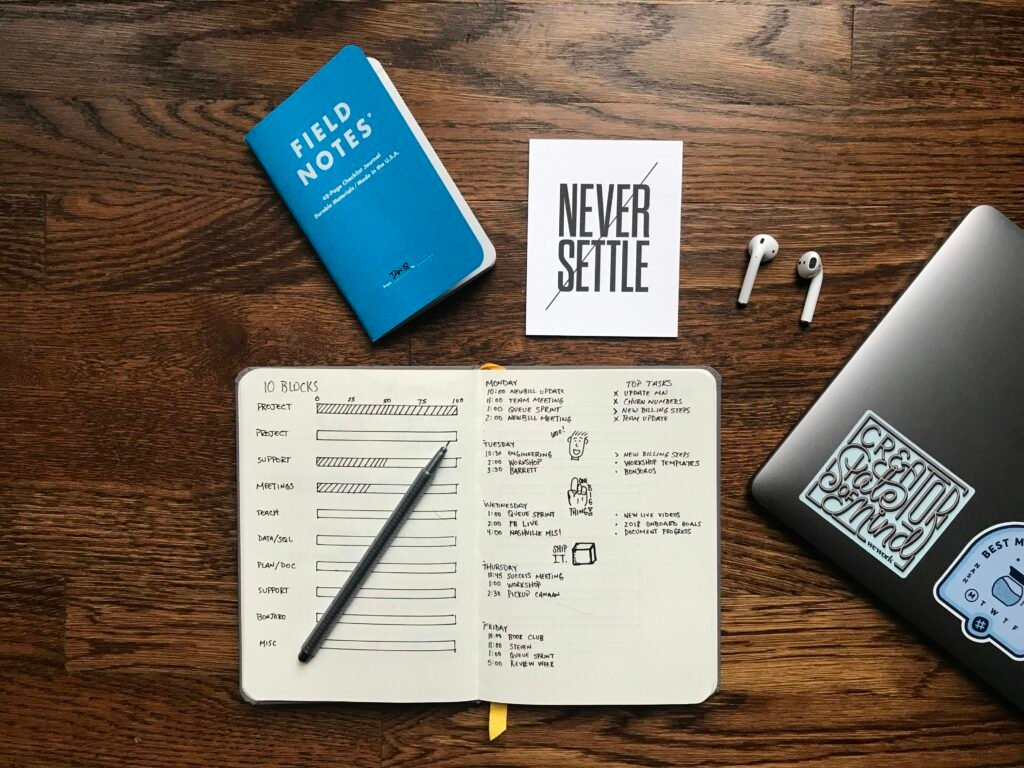What if you could create a routine so satisfying that it energizes you instead of draining you? Imagine waking up each day with a sense of purpose, confidence, and the energy to tackle everything on your plate. Sounds ideal, doesn’t it? But let’s face it: building a consistent routine can sometimes feel like trying to solve a Rubik’s Cube blindfolded. It’s tricky, and often leads to stress or—even worse—burnout.
So, how can you craft a routine that not only sticks but keeps you thriving? Let’s break this down together.
Understanding Routine and Burnout
When talking about routines, it’s essential to grasp what they really entail. A routine is more than just a series of tasks; it embodies your daily habits, your rituals, and how you structure your time. When done right, routines help you manage your day more efficiently, keep your stress levels in check, and even promote a healthy lifestyle. But if you go about building your routine the wrong way, you can easily tip the balance and find yourself spiraling into burnout.
What is Burnout?
Burnout is a state of emotional, physical, and mental exhaustion caused by prolonged stress. It sneaks up on you like a masked intruder, leaving you feeling depleted and less effective in your daily life. Let’s break that down a bit:
- Emotional Exhaustion: You feel drained, emotionally worn out, and unable to cope.
- Physical Exhaustion: You wake up tired, no matter how much rest you got.
- Mental Exhaustion: Your brain feels foggy; tasks that once seemed easy become daunting challenges.
Understanding burnout is the first step toward avoiding it as you establish your routine.
Set Realistic Goals
One of the primary reasons people burn out while trying to build a routine is that they set unrealistic goals. You might think you can suddenly start waking up at 5 AM, workout for an hour, and read three books a week. However, these aspirations often lead to disappointment when you inevitably fall short.
SMART Goals
Think about using the SMART criteria to formulate your goals:
| Criteria | Explanation |
|---|---|
| Specific | Define your goals clearly. Instead of saying, “I want to be fit,” say, “I want to exercise for 30 minutes, three times a week.” |
| Measurable | It should be easy to track your progress. |
| Achievable | Choose goals that are realistic for your current lifestyle. Don’t attempt to train for a marathon if you’re not an active runner yet. |
| Relevant | Make sure your goals matter to you and align with your long-term vision. |
| Time-bound | Set a deadline to create urgency. |
By using SMART goals, you can break your aspirations down into manageable, bite-sized pieces. This way, you’re setting yourself up for success rather than overwhelm.

Start Small
Have you ever tried to overhaul your whole life in one day? Most people have been there and understand the overwhelming feeling that comes with such grand plans. It’s not the way to build a sustainable routine.
The 2-Minute Rule
Consider starting with the 2-Minute Rule coined by David Allen. The idea is simple: if a task takes two minutes or less, do it immediately. This could mean making your bed, taking out the trash, or prepping your breakfast for the next day. Over time, these small habits stack, and eventually, you’ll find yourself with a robust routine.
Create Physical Anchors
Physical anchors can serve as reminders to initiate your habits. Whether it’s placing your workout clothes beside your bed or putting your book on your pillow, these cues can nudge you into action.
Examples of Physical Anchors
| Action | Physical Anchor |
|---|---|
| Morning Exercise | Lay out workout clothes the night before |
| Evening Reading | Keep a book on your bedside table |
| Healthy Snacking | Store fruits on the kitchen counter |
This setup creates a pathway for you to transition into your routine without overthinking it.

Prioritize Self-Care
Although self-care is often thrown around casually, it’s a non-negotiable aspect of a sustainable routine. It allows you to recharge, enhancing both your physical and mental well-being.
Types of Self-Care
Physical Self-Care: This could involve regular doctor visits, adequate sleep, or eating nutritious meals.
Emotional Self-Care: Talking to friends, journaling, or seeking therapy can help you process your feelings and reduce stress.
Spiritual Self-Care: Whether it’s through meditation, yoga, or simply spending time in nature, this aspect nurtures your inner self.
Develop a Morning Routine
The way you start your day has a significant impact on how the rest of it unfolds. If you leap out of bed and immediately dive into your phone, you’ll likely feel reactive rather than proactive.
Components of a Morning Routine
A good morning routine can include:
- Hydration: Start your day by drinking a glass of water to wake up your system.
- Movement: This could be stretching, yoga, or a full workout.
- Mindfulness: Spend some time meditating or journaling to set a positive tone.
- Nutritious Breakfast: Fuel your body with a healthy meal to kickstart your metabolism.
Creating a morning routine that resonates with you can pave the way for a more structured day.

Schedule Breaks
In the quest to build a consistent routine, don’t underestimate the power of breaks. There’s a reason the Pomodoro Technique—working for 25 minutes followed by a 5-minute break—has gained popularity. It maximizes productivity without burning you out.
Breaking Up Your Day
| Work Period | Break | Total Time |
|---|---|---|
| 25 minutes | 5 minutes | 30 minutes |
| 50 minutes | 10 minutes | 60 minutes |
| 90 minutes | 20 minutes | 110 minutes |
Integrating breaks into your day helps reset your mind and keeps you enthusiastic about your tasks.
Stay Flexible
Even with the most carefully planned routines, life can throw curveballs. Whether it’s an unexpected work commitment or a surprise family obligation, you need to stay flexible.
Adapting Your Routine
When life happens, instead of tossing your routine out the window, assess your schedule and make modifications. If you can’t complete a workout in the morning, maybe you could squeeze in a shorter session during lunch.
Being adaptable allows you to maintain consistency without feeling stifled.
Track Your Progress
Creating a routine without tracking your progress is like sailing without a compass. Grab a habit tracker or bullet journal and track your daily activities. You can take note of what works and what doesn’t.
Benefits of Tracking
- Accountability: You’ll be more likely to stick to your goals when you see them in writing.
- Motivation: Seeing your progress can give you a much-needed boost to keep going.
- Clarification: Reflecting on what’s working helps you adjust your routine for better results.
Celebrate Small Wins
As you implement your routine, take time to recognize and celebrate your accomplishments. Whether it’s completing a workout or maintaining a week of healthy eating, small victories deserve acknowledgment.
How to Celebrate
- Treat Yourself: Buy that book you’ve been eyeing or make a special meal.
- Share Your Success: Tell friends about your milestones or keep a success journal.
- Enjoy Some Downtime: Treat yourself to leisure activities you love, like watching a movie or taking a long bath.
Celebrating small wins keeps you motivated and excited about your routine.
Seek Support
You don’t have to embark on this journey alone. Enlist friends or family members who share your goals or are willing to support you.
Forms of Support
- Accountability Buddy: Pair up with someone who’s also interested in building a routine.
- Join a Group: Participate in community events or online forums that align with your aspirations.
- Hire a Professional: Consider a life coach, personal trainer, or nutritionist who can guide you.
Having a support system can provide encouragement and motivation, making the entire process more enjoyable.
Learn to Say No
Life is full of pressures and obligations that can disrupt your routine. Know your limits and don’t hesitate to say no when something doesn’t align with your goals or adds unnecessary stress.
Recognizing Your Limits
- Be Honest: If you’re already swamped, communicate your limitations.
- Set Boundaries: Designate time for yourself and protect that time fiercely.
- Prioritize: Determine what truly matters and how it fits into your routine.
Learning to decline requests that don’t serve your routine is crucial for maintaining a balanced life.
Reflect and Adjust
Take time regularly to reflect on your routine. After a month or so, assess what’s working and what’s not. Perhaps you find you’re consistently skipping a particular activity. Is it because you don’t enjoy it, or do you need to change the time you’re trying to do it?
Questions to Consider
- What aspects of my routine do I look forward to?
- Which tasks drain my energy, and why?
- What adjustments can I make to improve my overall satisfaction?
Being open to change can make all the difference. If something isn’t working, don’t hesitate to tweak your routine until it fits your life perfectly.
Conclusion: Finding Your Balance
Building a routine that won’t drain your spirit takes time, patience, and constant adjustment. Start small, set realistic goals, and remember that challenges will arise.
As you embark on this journey toward creating a fulfilling routine, keep in mind that the key lies in consistency, self-care, and flexibility. Your goal isn’t just to fill your days with tasks but to cultivate a lifestyle that nurtures and energizes you.
So, what will be the first small change you’ll make to move closer to a balanced routine? Your journey begins now—embrace every step of the way!

